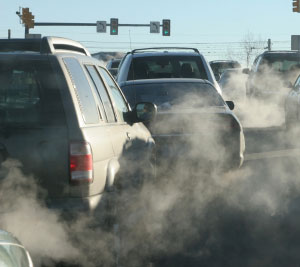Pioneering measurement technology that could help drive growth in one of the energy sector’s most exciting emerging areas is set to be rolled out across Europe early next year.
Currently under development by a team based at Slovenia’s Institute of Quality and Metrology (SIQ) the new system will enable researchers to accurately measure the output and efficiency of energy harvesters: small, low power devices that can be used to convert waste energy such as the heat or vibrations generated by operating machinery into electrical energy.
Energy harvesting is expected to be big business over the next decade. IDTechEx, an independent market researcher specialising in energy harvesting predicts that the value of the energy harvesting market will rise from $0.7 billion to over $5 billion by 2022. Whilst another recent report - authored by French analyst Yole Développement - claims that the use of harvesters to power wireless sensor networks in a host of building and industrial applications will drive a 51% increase in the market over the course of the next year.
The automotive industry is also excited about the potential of the technology, with firms including VW and BMW reportedly developing prototype harvesters that could use waste exhaust heat to power vehicle electronics.

However, despite the great potential of the technology, there are concerns that its uptake could be hampered by a lack of an internationally agreed measurement standards and verification tools. Which is where the Slovenian team comes in.
The group is working on the development of an advanced simulator that by mimicking the output of these promising energy sources can be used to calculate their efficiency and accurately analyse their performance. The work is being carried out as part of the wider EURAMET project - which is looking at how the performance of energy harvesting devices canbe improved - and involves a number of European measurement institutes including the UK’s National Physical Laboratory (NPL).
Dr Rado Lapuh, who is leading the SIQ team told The Engineer that existing measurement techniques are simply not ideal for measuring the weak and distorted signals generated by most energy harvesters. ‘The signals from the harvesters are not clean sin waves that we can measure very accurately but they are noisy, different shapes, and work needs to be done to improve measurements’ he said.
In an effort to address this, his group has developed a waveform generator that is able to precisely mimic over a million different waveforms or shapes of the kind that are produced by energy harvesters. Because the properties of these simulated waveforms are already known, the group is then able to use them to test and calibrate measurement equipment.
‘If we were measure a harvester directly we would get results and numbers but wouldn’t be able to check them,’ explained Lapuh. ‘Now we can use these special generators to check if our measurements are correct and calibrate our measuring equipment. After that we can use the measurement equipment to real harvesters in their real environments’
The generator covers signals with amplitude up to 10 V, frequency up to 100 kHz and dynamic range of 120 dB but are generated arbitrarily i.e with varying amplitude and frequencallowing the wave shape of the signal to vary and move up and down as it does in the real world. With the power to traceably simulate all signals from low frequency harvesters, thegenerator will allow the team to calibrate all properties of measurement equipment used to measure more accurately each harvester’s true efficiency.
The generator is still under development, but Lapuh said he expects to be able to demonstrate the finished device early next year. After that, he said, the device will be made available to all of the European measurement institutes and could help pave the way for an internationally agreed set of measurement standards.




IEA report claims batteries are ‘changing the game’
my comment was ironic, of course they should not be waiting around at all …